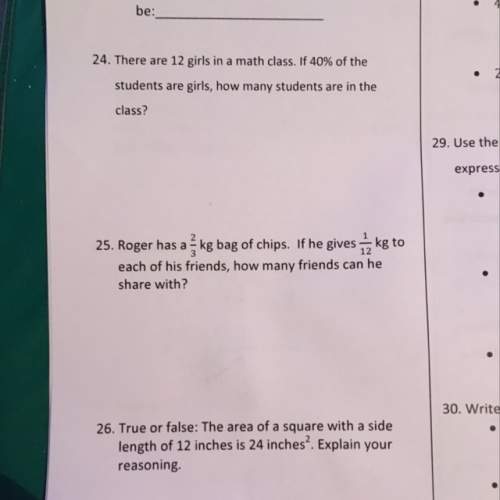
Mathematics, 16.03.2020 19:31, Damagingawsomeness2
In a sequence of numbers, the first number is 5 and each number after the first is 2 more than 4 times the preceding number. What is the third number in the sequence?

Answers: 2
Other questions on the subject: Mathematics


Mathematics, 21.06.2019 18:40, rivera8
Juliana says that she can use the patterns of equivalent ratios in the multiplication table below to write an infinite number of ratios that are equivalent to 6: 10. which statement explains whether juliana is correct? she is correct because she can multiply 6 and 10 by any number to form an equivalent ratio. she is correct because 6: 10 can be written as 1: 2 and there are an infinite number of ratios for 1: 2. she is not correct because the multiplication table does not include multiples of 10. she is not correct because 6: 10 is equivalent to 3: 5 and there are only 9 ratios in the multiplication table that are equivalent to 3: 5.
Answers: 1

Do you know the correct answer?
In a sequence of numbers, the first number is 5 and each number after the first is 2 more than 4 tim...
Questions in other subjects:


Mathematics, 16.06.2021 19:40


English, 16.06.2021 19:40













